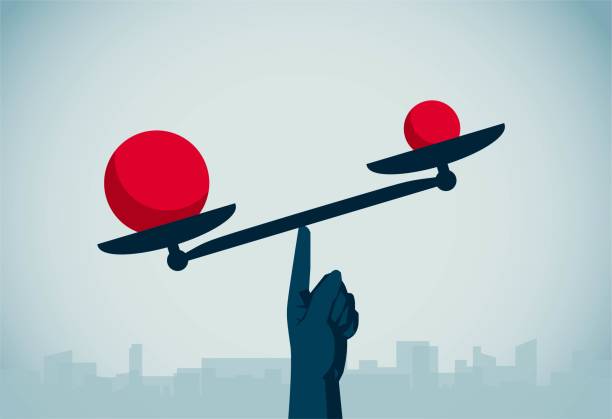6 Steps For Creating a Winning Pricing Strategy in 2022 and Beyond
.webp)
You may have the best good or service of its kind, but without a proper pricing strategy, you won’t make any sales. 20% of companies fail their first year, and 50% fail within five years.
Picking a suitable pricing model is the difference between success and near-certain failure. Considering the importance of pricing, you want to know precisely how to get it right before you start.
Here’s your ultimate guide to creating a pricing strategy that works without the headache.
Step 1: Determine Business Goals
Have key decision-makers in your company thought about business goals? Before determining pricing strategy, your company needs to have set goals and timelines for achieving them.
Goals can be broad, applying to the company as a whole, but they should also be tailored to departments, employees, managers, or customers.
Setting business goals in advance allows you to measure success and keep people on the same page. Here are some sample goals to think about:
- Improve cash flow
- Increase profits
- Beat competitors
- Capture more market share
- Market penetration
- Introduction of new products
- Increase prospect conversion
- Better utilize resources
- Increase revenue per customer
- Lower customer acquisition costs
Think about which goals apply to your company, as you’ll build a pricing strategy around that.
Step 2: Evaluate Your Pricing Potential
Pricing is unique across businesses, and companies producing identical goods may not charge the same as each other. Evaluating pricing potential means understanding the factors that influence what you can charge.
Some factors to consider include the following:
- Operating costs
- Geographical location
- Demand changes
- Inventory
- Demographic data
- Competitive advantages and drawbacks
Consider these and how they interact with your organization, structuring pricing accordingly.
Step 3: Understand Your Buyer Personas
Your ideal customer impacts what you can charge. Depending on their willingness to spend, pain points, overall wealth, and other factors, what they’ll pay for your good or service varies.
To start, consider interviewing customers and prospects. Gather as much information as possible on their preferences, spending habits, and how they view your product. Importantly, ask if there are ways they’d like to see your offerings improved.
The most important is to understand customer pain points. Where are they on their journey when they seek out your product, and what issues are you solving? Consider perceived and real value.
These factors determine how you price your offerings and how you may use promotional campaigns or discounts. For instance, if you have a top-tier product that addresses an urgent need, low-cost promotions will undercut your value and confuse customers, ultimately costing you profits.
Related: America’s Labor Shortage: What’s Going On, and 4 Things Your Company Can Do About It
Step 4: Look at Historical Data
If you have enough historical data to reference, analyze it when creating future pricing strategies. This data helps you determine what has and hasn’t worked previously and can guide present-day decisions.
Evaluate churn data, percentage of deals closed, average price per sale, and more. You’ll also want to look at any promotions you ran and their successes.
Step 5: Know The Competitive Landscape
No matter your business type, your competitors and their pricing decisions play a significant role in how you price your offerings. Consider the following approach.
First: Identify 3-5 Direct Competitors
Determine which companies are your direct competitors, and study their approach to pricing. Do they use a tiered structure, offer bundled discounts, rely on value-based pricing, or avoid deals altogether?
Second: Identify Indirect Competitors
There’s always an alternative to what you’re offering. Consider these substitutes and what they cost. Determine how your product or service is better and creates more value.
Sometimes, the most relevant alternative is a “no,” so you’ll also want to understand why a customer might object to buying your product and how you can convince them otherwise.
Step 6: Maintain Product Quality
Quality underpins your entire pricing strategy. People will pay more for high-quality goods, and those lacking will degrade customer trust.
While expensive, higher-quality goods can be harder to sell initially, it creates more loyal customers. People understand the value of a good investment, so make sure quality remains a top priority.
Step 7: Consider Various Pricing Strategies
At this point, you’ve gathered all the information necessary to begin executing a pricing strategy. So, consider the exact approach you’ll take. Here are a few sample pricing strategies.
Option 1: Bundle Pricing
Bundle pricing involves selling products in groups (“bundles”) for less than you’d sell them individually. Doing this successfully means profiting enough off some items in the bundle to outweigh losses on others.
Option 2: Price Skimming
Price skimming means setting high prices, then lowering them as more competitors enter the market. Businesses entering emerging markets should consider this strategy to capitalize on initial customers.
Option 3: Market Penetration Pricing
Unlike price skimming, this strategy is when businesses price low to acquire customers and undercut competitors. As you gain traction and trust, you can begin raising prices. Should you take this approach, make sure you can afford to price so low at the start.
Option 4: Value-Based Pricing
Value-based pricing involves setting your prices based on how much your customers think your offerings are worth. This is best suited to organizations selling unique products.
Customer feedback is essential to this strategy, as it allows you to determine your perceived value.
Step 8: Build a Pricing Strategy Team
The best way to ensure the price is right is to hire a dedicated pricing strategy team. These people are experts at evaluating the complex factors that go into pricing a good or service; they’ll constantly analyze your pricing strategy and tweak it to maximize profits.
Pricing strategy is an up-and-coming field, so finding experts can be challenging. Jennings Executive specializes in finding senior pricing strategy talent. Learn more today! Save your company the hassle, and let us find the best people for you.
Related: What is an Executive Search Firm? Here’s Everything You Need to Know
Recommended For You

The Hidden Burnout Risk In Pricing Roles
Pricing burnout is real: high conflict, low control—fix it with authority and systems.

Talent Benchmarking for Pricing Roles
Align pricing role scope, title & comp with real market benchmarks before hiring.

The Pricing Analyst's Toolkit
The essential pricing analyst toolkit—and what truly drives impact in the role.

Why Your Pricing Team Can't Be All Strategy Or All Execution
Pricing teams break when strategy and execution are out of balance—here’s how to fix it.

The Pricing Career Ladder - From Analyst To VP and Beyond
Inside the pricing career ladder: what drives growth from analyst to VP

What Makes A Great Pricing Leader
Great pricing leaders connect strategy to execution, influence without authority, and drive value.


